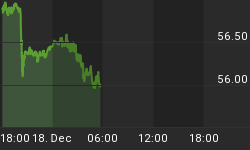
A recent FT article about 'Disaster Economics' by Gillian Tett caught our attention. We've been fans of Ms Tett's work for a while, especially her excellent book 'Fool's Gold'. This article was about the bond markets, but it was some interesting financial history and commentary that caught our attention.
Amidst a discussion of bizarre behaviour in the bond markets, we hear again of recent analysis from Fulcrum Asset Management. Fulcrum have been arguing a generational shift in the perception of, and planning for, disasters amongst investors. As one generational cohort of money managers yields control of the world's portfolios, a new one is emerging that perceives disasters as more frequently occurring than their predecessors.
Tectonic shifts in investment portfolios
Fulcrum point to a contemporary, but possibly previous, tendency (last few decades) of investors to act against a backdrop of disasters and crises as irregular and infrequent. This contemporary investor behaviour is contextualised with reference to the work of the economist Professor Robert Barro. Mr Barro's work finds that although there have been 58 'disasters', a drop in GDP of >10%, in the 20th century, only two occurred post 1950. During this time portfolios positioned for the good times, heavily allocated towards yield and productive investments, have reaped a fine harvest.
But today is different, continue Fulcrum, and investors are changing their perceptions and ultimately their asset allocation. We would urge this phenomenon has a role to play in a 12 year gold and silver bull market.
Investments can indeed be split into two categories; ones that produce returns and ones that offer protection. Or in another way, investors are either worried about the return on their investments, or the return of their investments. Different financial eras reward different investment biases, and investors act accordingly, allocating capital more heavily in one direction or another.
Coming home to roost
This is something we have talked about in these pages before. Our world view, including a perception of an overly leveraged banking system and politically mismanaged national currencies, means we are in favour of safe haven assets, especially those that lack counterparty risk.
Ms Tett finds some weight in the arguments of Fulcrum and draws a number of potential implications. One of these implications being that the need for safe havens may not be a short term phenomenon; we could not agree more. The number of safe haven bonds decreases by the day, and we see flows out of poor quality sovereigns towards Germany and the USA as short term examples of bounded rationality. If you're stuck in the glue factory seeking a stead, you would naturally choose the best looking horse available; a German horse is currently better than a Spanish horse. Ultimately though these German and American financial steads are too debt burdened to stay in the race.
As safe haven bond issuers are whittled down in numbers, non-financial assets such as gold bullion investment will continue to hold appeal. This is one of the reasons we feel there is plenty more juice left in this precious metals bull market. What constitutes a balanced, diversified or efficient portfolio, is indeed subjective, but any thinking investor needs to factor in disaster. Investors need to at least consider the thesis that the 1950 to 2000 period contained some anomalies.
Rethinking investment theory
Another implication that Ms Tett draws out of Fulcrum's thesis is that investment theory needs to be rethought in order to place less historical emphasis on the 'learnings' of the contemporary financial era.
Financial economics has assumed stability and regularity that a longer term appreciation of financial history suggests is misplaced. It is not just Robert Barro's work that suggests this, but other economists who worked with sample periods over 50 years, and other schools of economic and mathematical thought. Try telling proponents of complexity theory that markets are understandable and stable. Jim Rickards provides an excellent articulation of the limitations of financial economics in his best-selling book 'Currency Wars'.
It is interesting to think how such changing perceptions to disaster would affect asset classes and, indeed, investment strategies. Warren Buffet is perhaps the preeminent investor of the 20th Century, but he is at heart a security analyst (with admittedly a fair macro appreciation). How would Mr Buffet's modus operandi reward investors between 2000 and 2030, given his focus on equities and productive investments?
The financial world fell in love with equities in the 1980s and 1990s, with academics such as Professor Jeremy Siegel, and their books like 'Stocks for the long run', being the choir masters. Sample periods have a great deal to play in research and the stocks for the long run mantra may be exposed as excessive dogma, something that some gold investors can also sometimes be guilty of.
The Jim Rogers way and gold investing
We seem to be part-time cheerleaders for Jim Rogers in these pages, but his investing of the last 40+ years has had a broader approach, with wider asset allocation, than the Oracle of Omaha. Most notably is Mr Rogers' more concerned focus on disaster, and less dogmatic love in with equities.
Mr Rogers was a big proponent of real assets in the 1970s, including commodities and precious metals. His performance over that period was stellar, and Mr Rogers has been calling for gold and silver since the turn of the Millennium as well.
If disaster economics is really here to stay, and investor perceptions are melded around this, strategies that pay adequate homage to this may better reward investors. Disaster economics means a more focused and long term attention on safe havens. Some of these safe havens are relatively less able to absorb these potential investment flows; gold and silver especially. Some might ask if the gold investment market is part of such apparent safe haven investing; you bet it is.















